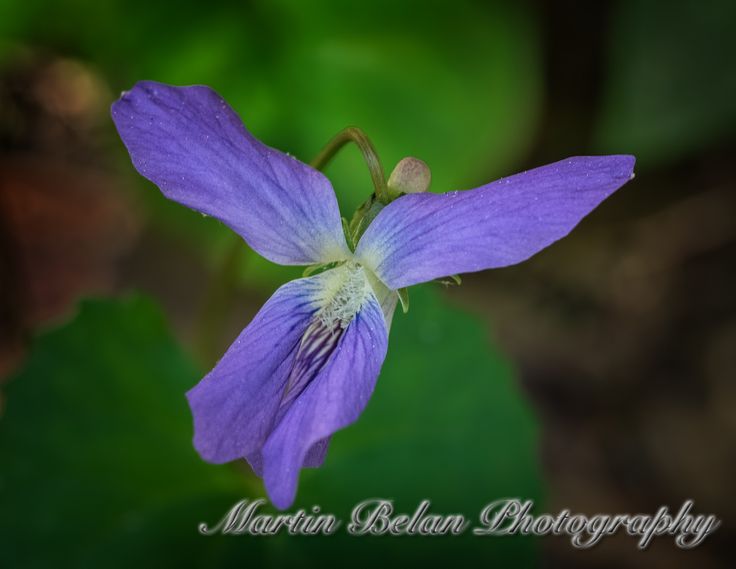The Common Blue Violet: A Marvelous Flower
The common blue violet (Viola sororia) is a beautiful and fascinating flower that can be found in many parts of North America. It belongs to the genus Viola, which includes around 600 different species of flowering plants. The common blue violet is known for its striking blue-purple petals, which make it a popular choice for gardens and landscaping. In this article, we will explore the history, characteristics, and uses of the common blue violet.
History
The common blue violet has a long history of use by Native Americans for medicinal purposes. They used various parts of the plant to treat ailments such as headaches, coughs, and colds. The plant was also used for its emetic properties, which made it useful for inducing vomiting. Later on, European settlers in North America began to cultivate the common blue violet for its ornamental value.
Appearance
The common blue violet has heart-shaped leaves with serrated edges that grow from the base of the stem. The flowers have five petals that are arranged in a distinctive pattern, with two upper petals, two side petals, and one lower petal. The petals are usually blue-purple, although they can range from white to pink. The flowers have a sweet fragrance and bloom in early spring.
Varieties
There are several different varieties of the common blue violet, including the white form (Viola sororia f. albiflora), which has white petals, and the confederate violet (Viola sororia priceana), which has larger flowers than the standard variety. There are also several hybrids of the common blue violet, such as Viola sororia 'Freckles', which has purple and white petals with dark spots.
Cultivation
The common blue violet is a hardy plant that can grow in a variety of conditions. It prefers moist, well-drained soil and partial shade, although it can also tolerate full sun. The plant can be propagated by seeds or by dividing the root clumps in early spring or fall. Once established, the common blue violet requires very little maintenance and can self-seed to create large patches.
Uses
The common blue violet has both ornamental and medicinal uses. Its striking flowers make it a popular choice for gardens and landscaping, and it is often used as a ground cover. The plant is also edible and can be used in salads or as a garnish. In addition, the leaves and flowers of the common blue violet have been used for centuries to treat various ailments, including headaches, coughs, and colds.
Medicinal Properties
The leaves and flowers of the common blue violet contain compounds that have anti-inflammatory and antitumor properties. They are also high in vitamin C and other antioxidants, which can help boost the immune system and protect against disease. Some studies have even suggested that the plant may have potential as a natural cancer treatment.
Growing Tips
If you're interested in growing the common blue violet in your own garden, here are some tips to get you ed:
Soil
The common blue violet prefers moist, well-drained soil. If your soil is heavy or clay-like, consider adding some compost or sand to improve drainage.
Sunlight
While the common blue violet can tolerate full sun, it prefers partial shade. Plant it in an area that gets at least a few hours of sunlight each day but is shaded during the hottest part of the day.
Watering
The common blue violet likes to be kept moist, so make sure to water it regularly. However, be careful not to overwater, as this can lead to root rot.
Fertilizer
The common blue violet doesn't require much fertilizer, but you can give it a boost by adding some compost or a balanced fertilizer in the spring.
The common blue violet is a beautiful and versatile flower with a rich history and many uses. Whether you're interested in using it for its ornamental value, its medicinal properties, or both, the common blue violet is sure to impress.
FAQs
Q: Are common blue violets easy to grow?
A: Yes, common blue violets are relatively easy to grow and require very little maintenance.
Q: Can common blue violets be grown in containers?
A: Yes, common blue violets can be grown in containers, as long as they have enough room to spread out their roots.
Q: Are common blue violets invasive?
A: While common blue violets can self-seed and spread quickly, they are not considered invasive in most areas.
Q: Can common blue violets be used in cooking?
A: Yes, common blue violets are edible and can be used in salads or as a garnish.
Q: What other plants complement common blue violets in a garden?
A: Common blue violets pair well with other early spring bloomers, such as daffodils, tulips, and hyacinths.










Post a Comment for "The Common Blue Violet: A Marvelous Flower"